Wellness
Clinic Wellness Team. A key factor to spine or back pain conditions is staying healthy. Overall wellness involves a balanced diet, appropriate exercise, physical activity, restful sleep, and a healthy lifestyle. The term has been applied in many ways. But overall, the definition is as follows.
It is a conscious, self-directed, and evolving process of achieving full potential. It is multidimensional, bringing together lifestyles both mental/spiritual and the environment in which one lives. It is positive and affirms that what we do is, in fact, correct.
It is an active process where people become aware and make choices towards a more successful lifestyle. This includes how a person contributes to their environment/community. They aim to build healthier living spaces and social networks. It helps in creating a person’s belief systems, values, and a positive world perspective.
Along with this comes the benefits of regular exercise, a healthy diet, personal self-care, and knowing when to seek medical attention. Dr. Jimenez’s message is to work towards being fit, being healthy, and staying aware of our collection of articles, blogs, and videos.
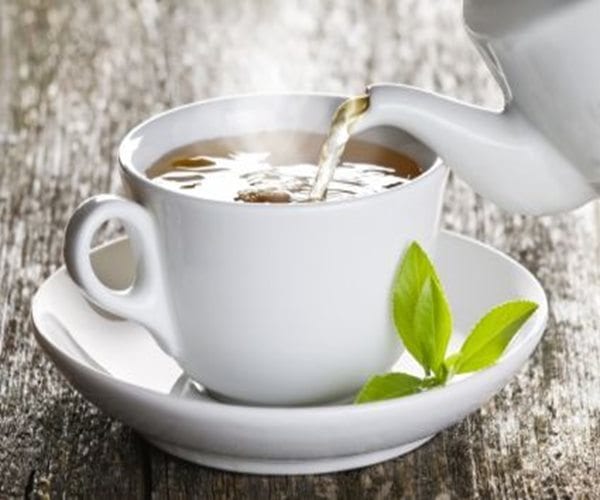
by Dr Alex Jimenez DC, APRN, FNP-BC, CFMP, IFMCP | Natural Health, Wellness
Hundreds of studies show that teas bestow a multitude of health benefits. And with teas ranging from mild green to robust Earl Grey along with a wide variety of herbal teas, you’re sure to find one to suit your taste — and your ailment.
Below are different types of tea along with their health benefits.
Black
A study published in Frontiers of Nutrition found that black tea may reduce blood sugar levels naturally, and that drinking three or more cups a day lowers the risk of Type 2 diabetes and helps those who have the disease keep it under control. Researchers at Framingham State University extracted several types of antioxidants from black tea that block the enzymes responsible for increasing blood sugar.
Another study found that those same three cups of black tea reduced the risk of fractures in elderly women by up to 42 percent.
Green
Researchers at Japan’s Kyoto University found that drinking green tea could help prevent deadly abdominal aortic aneurysms. They believe that the beneficial compounds in green tea are polyphenols, a type of antioxidant that fights free radicals and reduces inflammation. The polyphenols also appear to make arteries stronger and more flexible by regenerating elastin, an essential protein that makes arteries stretchy, yet sturdy.
Australian researchers found that three cups of tea a day reduced the risk of fractures by 30 percent. Experts at Flinders University believe that chemicals in black and green tea called flavonoids accelerate the building of new bone while slowing the breakdown of existing bone.
Green and white teas contain large amounts of EGCG, a powerful antioxidant linked to a lower risk of heart disease, Alzheimer’s disease, and numerous types of cancer. A study at Japan’s Okayama University found that senior citizens who drank large amounts of green tea slashed their risk of dying from heart disease by as much as 76 percent, and a Chinese study found that drinking green tea cut the risk of lung cancer by two-thirds.
Earl Grey
The distinctive flavor of Earl Grey tea is due to an extract made from the bergamot fruit, which is a bitter citrus fruit. Studies have found it lowers cholesterol naturally and safely by reducing LDL (bad) cholesterol and triglycerides, while raising levels of HDL (good) cholesterol. Bergamot lowers an especially harmful type of LDL called LDL-B, and lowers inflammation as well as blood sugar. “That’s a trifecta!” says nationally known nutritionist Jonny Bowden, author of Smart Fat: Eat More Fat. Lose More Weight. Get Healthy Now.
Rooibos.
Rooibos tea, also called redbush tea, is an herbal tea made from the South African shrub Aspalathus Lineraris. One study found that rooibos protected the liver against cirrhosis caused by alcohol or the liver toxin carbon tetrachloride as well as N-acetyl-L-cysteine (NAC), the supplement commonly used to treat the condition. Other studies have found it lowers blood pressure, may help prevent diabetes and cancer, and even aids in weight loss.
Ginger.
Ginger contains active phenols, including gingerols and shogaols, and ginger tea has been used to sooth upset stomachs for centuries, relieving gas and diarrhea. Numerous modern studies have found that ginger can help alleviate morning sickness and motion sickness, and can even lessen the nausea caused by chemotherapy. Ginger is anti-inflammatory, and a study published in The Journal of Pain found that ginger eases muscle pain following exercise. Ginger can also suppress the appetite and help with weight loss. An article published in the journal Metabolism found that drinking ginger tea after meals quelled hunger pangs.
Peppermint.
According to a study in the International Journal of Neuroscience, peppermint tea increases concentration and focus. Peppermint oil is a natural stimulant, and merely sniffing a warm cup can boost your energy levels. Numerous studies have found that peppermint oil decreases fatigue, soothes nerves, and sharpens memory.
Peppermint also tackles headaches. A placebo-controlled study published in the International Journal of Clinical Practice found peppermint reduced the pain of migraines. An earlier German study found that peppermint reduced pain as effectively as 1,000 mg of acetaminophen.
Peppermint tea also aids in digestion, and several studies found that peppermint reduced the symptoms of irritable bowel syndrome by 75 percent.
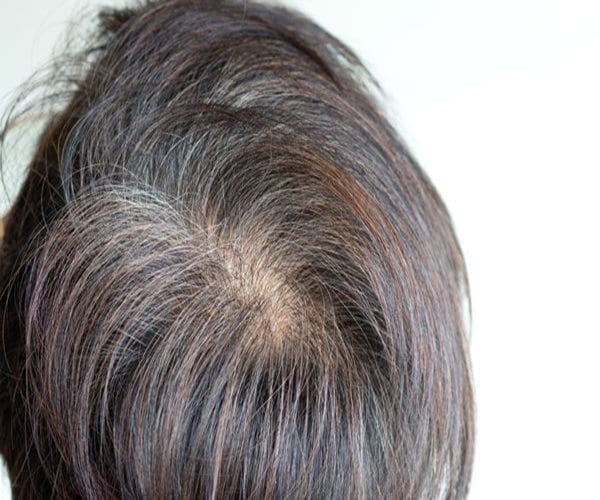
by Dr Alex Jimenez DC, APRN, FNP-BC, CFMP, IFMCP | Anti Aging
Changes in your hair — whether it’s graying hair or hair loss — are a bane of aging.
But if new research in mice pans out in humans, you could one day cross worries about your mane off your list of concerns about getting older.
That’s because researchers accidentally pinpointed skin cells linked to gray hair and balding while they were conducting research on a specific type of cancer that affects nerve cells. The investigators believe their discovery could someday lead to new treatments to stop baldness and graying hair.
“Although this project was started in an effort to understand how certain kinds of tumors form, we ended up learning why hair turns gray and discovering the identity of the cell that directly gives rise to hair,” said study author Dr. Lu Le. He is an associate professor of dermatology at UT Southwestern Medical Center in Dallas.
“With this knowledge, we hope in the future to create a topical compound or to safely deliver the necessary gene to hair follicles to correct these cosmetic problems,” he explained in a university news release.
The researchers found that a protein called KROX20 turns on skin cells that develop into the hair shaft. These cells are usually linked to nerve development.
These skin cells then produce a protein involved in hair color. This protein is called stem cell factor (SCF). When SCF was deleted from mice, their hair turned white, according to the report.
When KROX20 cells were deleted, the mice became bald, the researchers said.
Studies done on animals don’t always turn out the same in humans, so it remains to be seen if these results will look as promising in people.
The study team does want to learn if SCF and KROX20 stop working properly over time in people. And, because gray hair and balding are often among the first signs of aging, this research could also provide information on aging in general, the authors noted.
The study was published online May 2 in the journal Genes & Development.
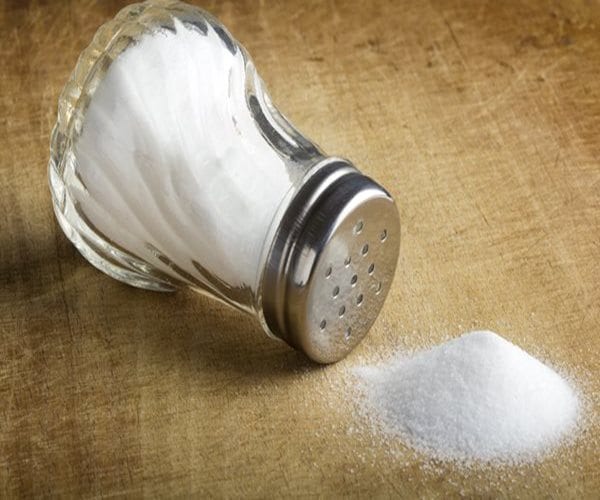
by Dr Alex Jimenez DC, APRN, FNP-BC, CFMP, IFMCP | Diets, Fitness
Tossing out the salt shaker may not be enough for your heart health. Most of the salt that Americans consume comes from processed foods and restaurant meals, a new study finds.
In a sampling of 450 U.S. adults, only 10 percent of salt, or sodium, in their diet came from food prepared at home. About half of that was added at the table.
Instead, restaurant meals and store-bought foods — including crackers, breads and soups — accounted for 71 percent of salt intake, the study found.
“Care must be taken when food shopping and eating out to steer clear of higher-sodium foods,” said lead researcher Lisa Harnack.
For prevent harmful high blood pressure, Americans are advised to limit salt intake to 2,300 milligrams (mg) daily, said Harnack, a professor at the University of Minnesota School of Public Health. That’s the equivalent of one teaspoon.
But, more than eight out of 10 Americans exceed this limit “by a mile,” she said.
Food diaries from study participants showed that about 3,500 mg of sodium was consumed a day on average.
The report was published online May 8 in the journal Circulation.
Kathryn Foti, an epidemiologist who wasn’t involved in the study, pointed out that high blood pressure is a leading cause of heart disease and stroke in the United States.
“Reducing salt reduces blood pressure and can help prevent cardiovascular disease,” said Foti, of the Johns Hopkins Bloomberg School of Public Health in Baltimore.
“The most effective way to reduce salt is to reduce the content in commercially processed and prepared foods,” added Foti, co-author of an accompanying journal editorial.
She said gradual, voluntary reductions across the food supply could have a large public health benefit.
“Reducing average sodium intake by as little as 400 mg per day could prevent up to 32,000 heart attacks and 20,000 strokes annually,” she said.
The American Heart Association has launched a sodium-reduction campaign to encourage food companies and restaurants to reduce the salt in their products.
Harnack said food companies and restaurants that have pledged to comply “should be commended.”
But, Foti added, doctors should step up their efforts by educating patients about where their salt actually comes from.
“While it’s OK to encourage patients to go easy on the salt shaker, more importantly, physicians should emphasize product selection,” Foti suggested.
She and Harnack recommended reading the Nutrition Facts panel on packaged foods.
Swap out the high-sodium items with lower-salt options, Foti advised. Salt content in many foods varies widely across brands, she noted.
In restaurants where nutrition information isn’t posted, “consumers can request information about the salt content of menu items or ask how foods are prepared,” Foti added.
“And of course, choosing more fresh foods, such as fruits and vegetables, can help you reduce the salt in your diet,” she said.
The study involved 450 racially diverse adults, aged 18 to 74, living in Birmingham, Ala.; Minneapolis-St. Paul; or Palo Alto, Calif.
Between December 2013 and December 2014, the participants were asked to record their daily diet for four 24-hour periods. In addition, the study participants provided samples of salt equivalent to the amount they added at home.
Average salt consumption was over 50 percent more than the recommended 2,300 milligrams, the researchers found.
Salt added while cooking comprised only about 6 percent of sodium consumption, and salt added at the table from the salt shaker accounted for just 5 percent, according to the study.
Salt naturally found in foods made up about 14 percent of dietary sodium, while salt in tap water, dietary supplements and antacids made up less than 1 percent, according to the report.
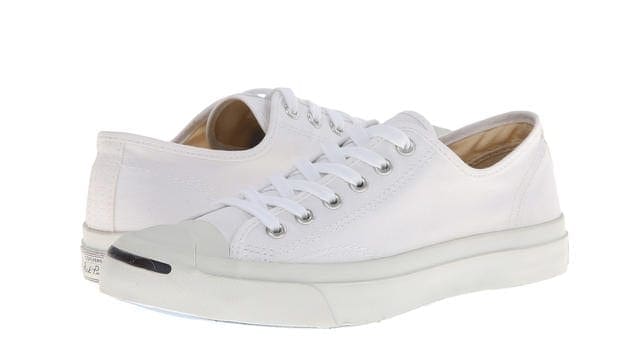
by Dr Alex Jimenez DC, APRN, FNP-BC, CFMP, IFMCP | Fitness, Health, Wellness
A new season means it’s time for a fresh new pair of kicks. And what better option to transition to spring in style than some bright white sneakers? Not only are they totally trendy right now, but this neutral footwear also matches (nearly) everything in your wardrobe. Plus, sneakers are the ultimate travel shoe—you can walk around in them all day without having to stop and deal with blisters or sore arches. (These comfortable ballet flats, stylish flats with arch support, and podiatrist-approved comfortable sandals are also great options for spring and summer travel, as well as everyday wear.) So whether you need sneaks to wear to work or to sport post-gym with your mesh-paneled leggings and cool hoodies, we’ve found nine fashionable white sneakers for women that will help you conquer the new season with a little extra pep in your step.
Converse Jack Purcell CP Canvas Low Top ($65; zappos.com)
If you’re looking for that quintessential pair of casual kicks, white Converse will do the trick. These classic sneakers are a super versatile choice—you can wear them on the weekends while running errands or rock them at the office for a cool, business-casual look.
Take your style game to a whole new level with these killer high-tops. You can rock them with rolled up jeans, shorts, or even a skirt for a truly on-point look.

Keds Champion Original ($40; zappos.com)
Remember these? Keds are making a comeback and we’re definitely not mad about it—we love the versatility of these cute, simple sneaks. Plus, when they get scuffed, you can easily throw them in the wash—a major bonus when it comes to keeping white footwear fresh and clean.

Adidas Stan Smith Sneaker ($75; nordstrom.com)
These Adidas may be an old-school style, but modern-vintage sneakers are coming back in a big way. Plus, wearing them with stylish athleisure gives these sneakers an upgraded, hip look. Let them take you from a Saturday morning workout to brunch and beyond by pairing the sleek shoes with some bright, bold leggings.
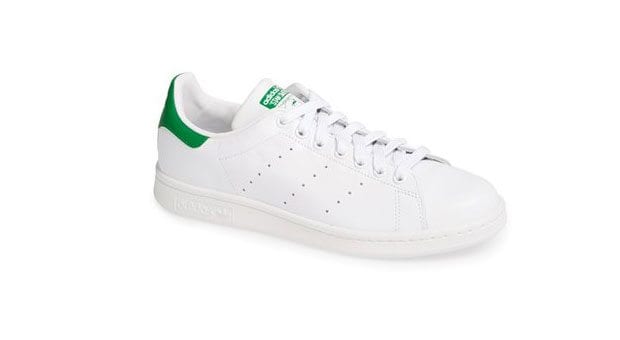
New Balance 576 Made in UK Animal ($250; newbalance.com)
Mix up your wardrobe with a little dose of texture. These stylish monochromatic New Balance shoes, featuring an embossed leather upper, can easily be dressed up or down for any occasion.
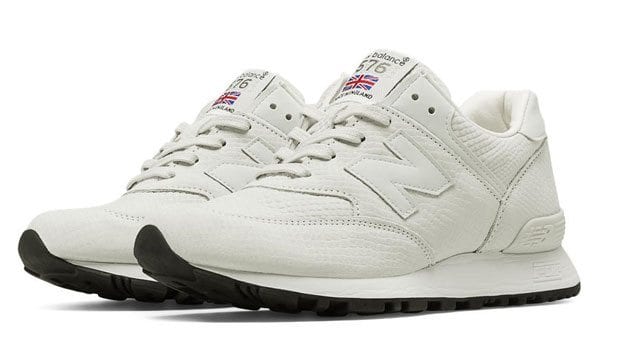
DC Trase Slip-On TX ($45; zappos.com)
Looking for pair of shoes to easily throw on as you rush out the door? These slip-ons make getting dressed in the morning a total breeze. Not to mention, they look white-hot with skinny jeans, capris, shorts, dresses, and more.

Reebok Lifestyle Princess ($40; zappos.com)
This classic aerobics shoe has been updated for 2017 with breathable uppers and a terry lining designed to absorb moisture. They bring a preppy vibe to any active outfit.

Adidas Superstar Sneaker ($80; nordstrom.com)
The Adidas Originals Superstar is still a must-have after 48 years. Pair it with your basic leggings or even with a maxi skirt for a celeb status outfit.
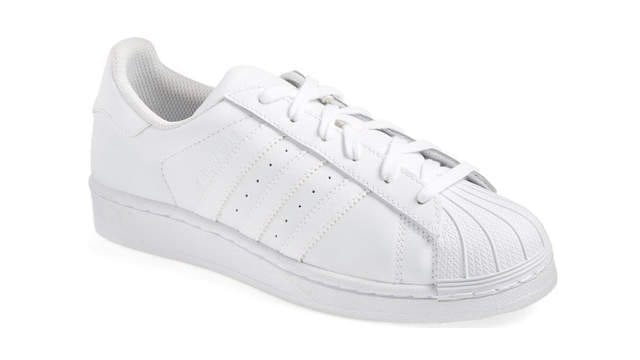
Rebook Classic Leather Pearlized ($80; reebok.com)
A subtle shine makes the Reebok Classic Leather Pearlized that much more luxe. Padded foam sockliners keeps blisters at bay when you are working the no sock look.

Puma Basket Heart Patent ($85; puma.com)
Oversize laces—a nod to the 80s—give the Puma Basket Heart Patent a retro feel. This style was originally introduced in the 60s as a basketball warm-up shoe, so they’re great for hitting the courts too.

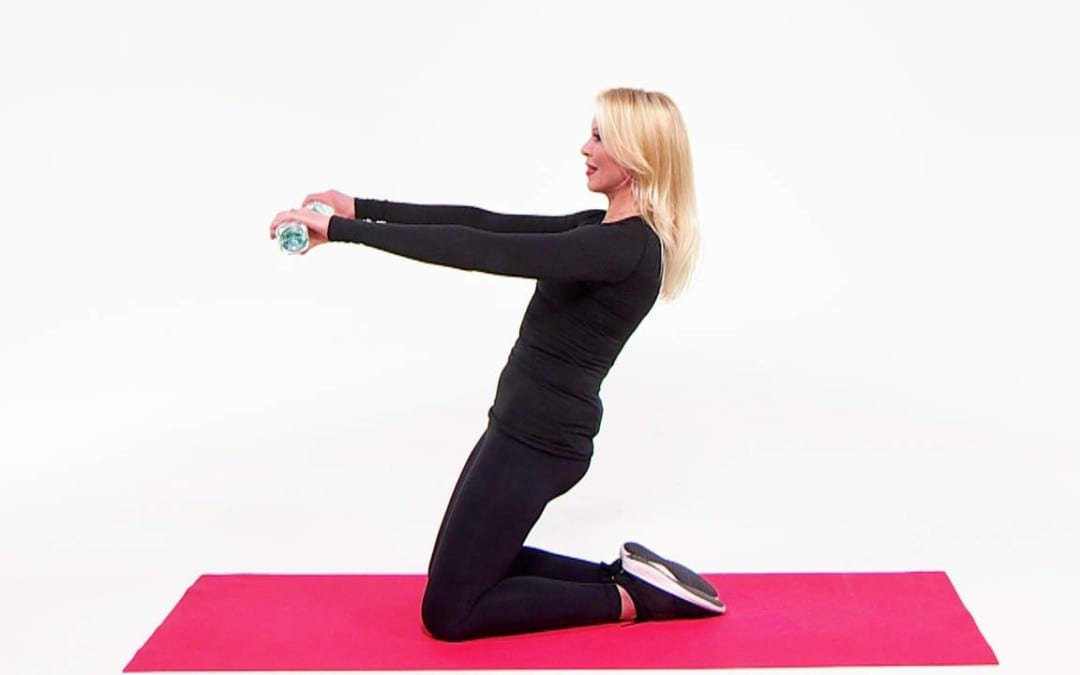
by Dr Alex Jimenez DC, APRN, FNP-BC, CFMP, IFMCP | Fitness, Health, Wellness
Pilates is known for building strength in your core—but that doesn’t mean it only works the abs. This popular workout can also lengthen your limbs and sculpt lean muscle all over. Take it from Julie Erickson, founder of the Endurance Pilates and Yoga studio in Boston. A certified Pilates instructor who’s trained pro athletes and dancers, Julie knows exactly how to use this workout to target each part of the body so you stay strong, no matter what type of activity you’re into (football, ballet, you name it!). In this video, Julie demonstrates six Pilates exercises that are specifically intended to help tone you from the waist up. Don’t have time to watch? Here are the six sculpting moves she shows us:
Shoulder opener: On a mat, rest on your knees holding a weight (or water bottle!) in each hand. Raise your arms out slightly behind the body, keeping them straight and pulsing your hands in towards your midsection behind the back for 45 seconds.
RELATED: This 10-Minute Ab-Sculpting Pilates Workout Targets Your Inner Core
Shave: On a mat, rest on your knees with your arms raised straight above your head. Create a diamond shape with hands above the head. With hands still in a diamond shape, bend at the elbows to lower the arms behind the head, then extend straight again. Continue this bend-and-extend movement for 45 seconds.
Arms wide: Standing tall with your back against a wall, slowly raise arms out to your sides until they create a wide “V” shape above your head. Return them down to the starting position and repeat this movement for 45 seconds.
RELATED: Get Sculpted Shoulders and Toned Arms with Emily Skye’s Upper-Body Workout
Goal: Standing tall with your back against a wall, raise your arms to a goal post position with each elbow creating a 90-degree angle at shoulder height. Keep arms raised and slowly shrug your shoulders up and down for 45 seconds.
Chest expansion: On a mat, rest on your knees with a weight in each hand. Slowly raise your arms straight out to chest height in front of you, then lower them back down. Turn your head to the right, then left, then return to center and repeat this sequence for 45 seconds.
Overhead side stretch: Standing tall, raise your right arm up overhead and lean your torso toward the left to stretch the side body. Return to center and repeat with the left arm raised, leaning your torso to the right to stretch the other side. Continue to switch off stretching to each side for 45 seconds.
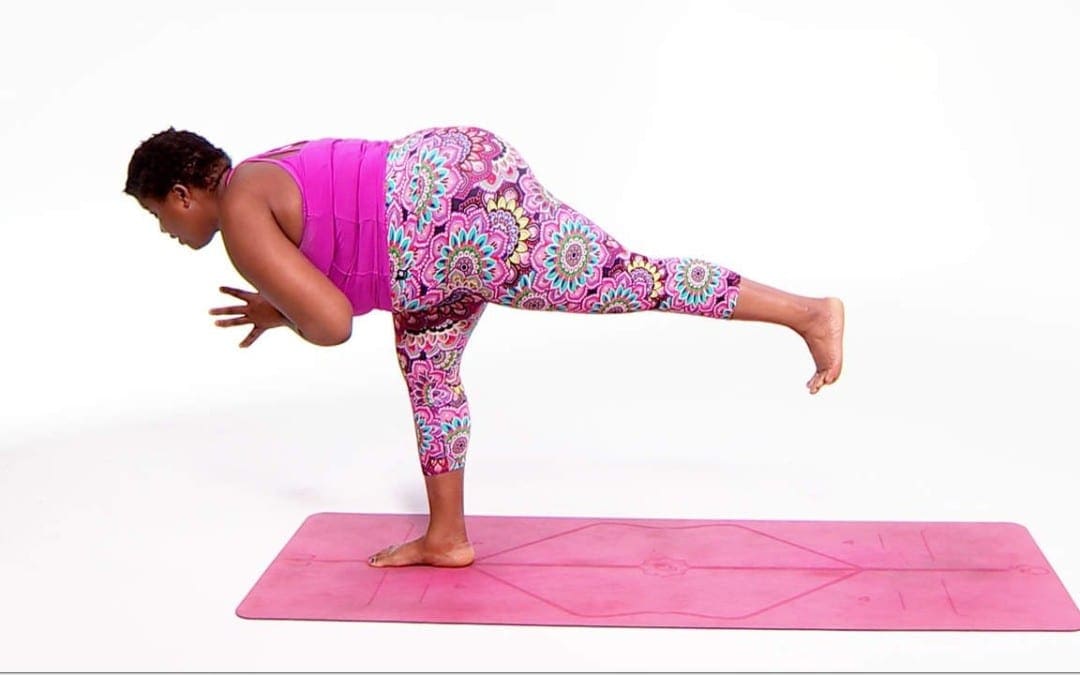
by Dr Alex Jimenez DC, APRN, FNP-BC, CFMP, IFMCP | Fitness, Health, Wellness
Taking care of your mind and body can take tons of different forms, from settling in for a scented bubble bath to getting your heart rate sky-high in spin class. It all depends on what works best for you.
But if you ask us, practicing self-care while you stay active is the best of both worlds. That�s just what we�re doing in this eight-minute flow with body-positive yogi and Every Body Yoga author Jessamyn Stanley.
�This sequence is all about getting into your own body, finding your strength within, and remembering that you are self-confident all the time, no matter what obstacle, no matter where you are,� says Jessamyn. Preach.
There�s science to back up yoga�s mind-body benefits as well. The ancient activity comes with a wide range of healthy side effects, from lower stress levels to a stronger core, better sex, and fewer headaches (you know, just to name a few). Not to mention yoga is accessible for pretty much every body, as Jessamyn�s book demonstrates.
RELATED: This Invigorating Yoga Flow is the Best Way to Get Energized
In the video above, she�ll show you how to strengthen and lengthen your body using classic poses like Warrior I, Warrior II, Triangle, and more. You�ll also work on building better balance and eventually take time at the end of the practice to sit still, breathe, and appreciate all the amazing work your body has just allowed you to do.
Nervous because you�re a yoga novice? There�s no need. Jessamyn caters the flow to beginner and advanced yogis alike. Follow the yoga routine in the clip above to practice self-love and exercise at the same time. It�s really a win-win. And if you want to keep the self-love coming post-workout, go ahead and treat yourself to a DIY spa day. Because you deserve it.
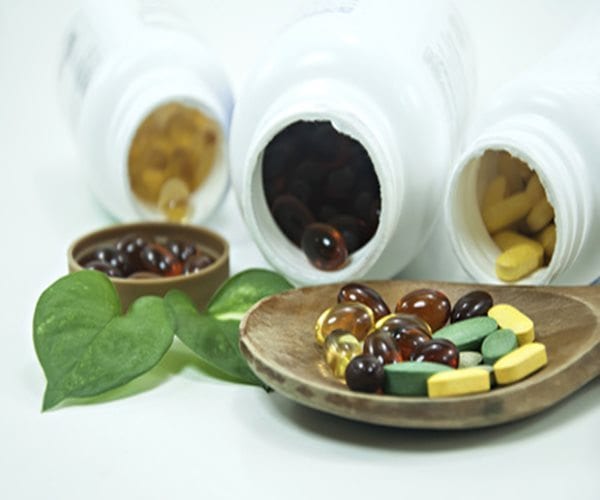
by Dr Alex Jimenez DC, APRN, FNP-BC, CFMP, IFMCP | Herbs, Natural Health, Remedies, Wellness
Many parents of children with debilitating gastrointestinal disorders may be frustrated by the lack of good treatment options and tempted to try herbal remedies at home, but a new study suggests they should proceed with caution.
Researchers examined data from 14 previously published studies with a total of 1,927 children suffering from problems like diarrhea, dehydration, colic, constipation, abdominal pain and irritable bowel syndrome. They didn’t have enough data to combine results from multiple small studies to offer definitive proof that herbal remedies might work for any of these health problems.
But some of the small studies did suggest certain herbal medicines might help ease diarrhea, abdominal pain and colic. And the studies didn’t find serious side effects associated with herbal remedies.
“The lack of conclusive research is unfortunately a general problem in pediatrics, but a special problem in herbal medicine is that for many herbal remedies no licensed and standardized products are available,” said lead study author Dr. Dennis Anheyer of the University of Duisburg-Essen in Germany.
In other words, even if evidence shows an herb may be safe and effective for a specific health problem, that doesn’t necessarily mean that every single version of that herb available for sale would work as well or be free of side effects.
When researchers looked at four studies with a total of 424 participants, they found some evidence suggesting that a variety of herbal remedies might help diarrhea: a plant in the rose family called potentilla erecta, carob bean juice, and an herbal compound preparation with chamomile.
One study with 120 participants also suggests that peppermint oil might help curb the duration, frequency and severity chronic abdominal pain that doesn’t have a clear medical explanation.
And, fennel might help ease colic symptoms in babies according to a review of five small studies of herbal remedies for infant colic.
While it’s possible herbal remedies might be used in addition to traditional medications or to help reduce reliance on drug therapy, parents should still see a doctor before trying out herbal therapies on their own, Anheyer said by email.
Another reason for caution is that even the studies in the current analysis that found herbal remedies effective don’t show how large the effects are, noted Dr. Peter Lucassen, a researcher at Radboud University Medical Center in the Netherlands who wasn’t involved in the study.
These small studies might get results that find herbs are statistically better than no treatment or alternative therapies, but the difference still might not be big enough to have a meaningful clinical impact on patients’ symptoms, Lucassen said by email.
“I would not advocate any of the herbal medicine because the article does not provide any data about how large the effects are,” Lucassen said.
Often, herbal remedies combine a variety of ingredients and use differing amounts of the main ingredients, which may alter how well they work and how safe they are for kids, Lucassen added. They might also contain chemicals not found in prescription medications that have dangerous side effects or a risk of overdose.
And there’s another reason parents shouldn’t try herbal remedies without seeing a doctor.
“Delayed diagnosis might be the result of herbal medications because parents seek help too late because they try the herbs first,” Lucassen said.



















